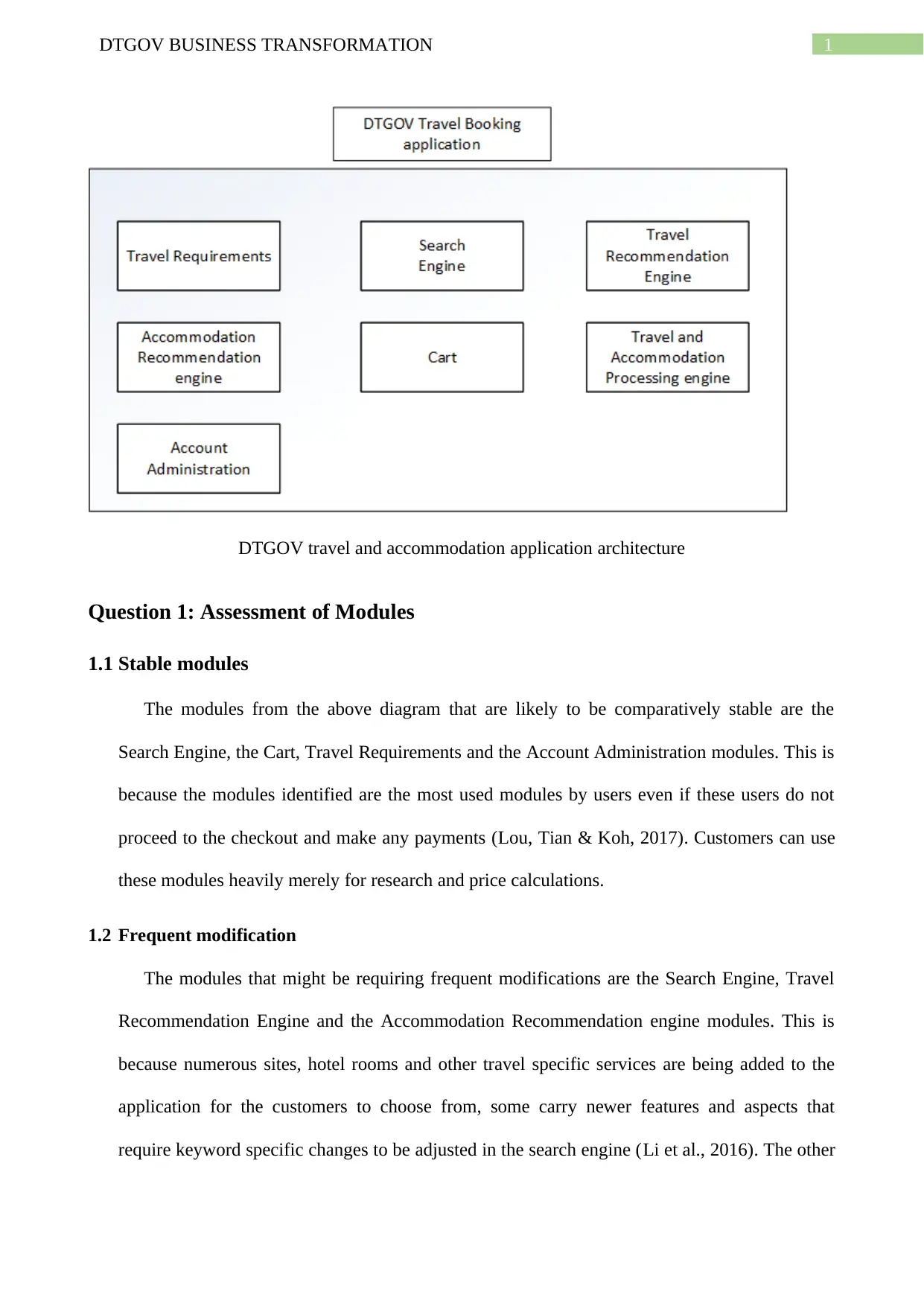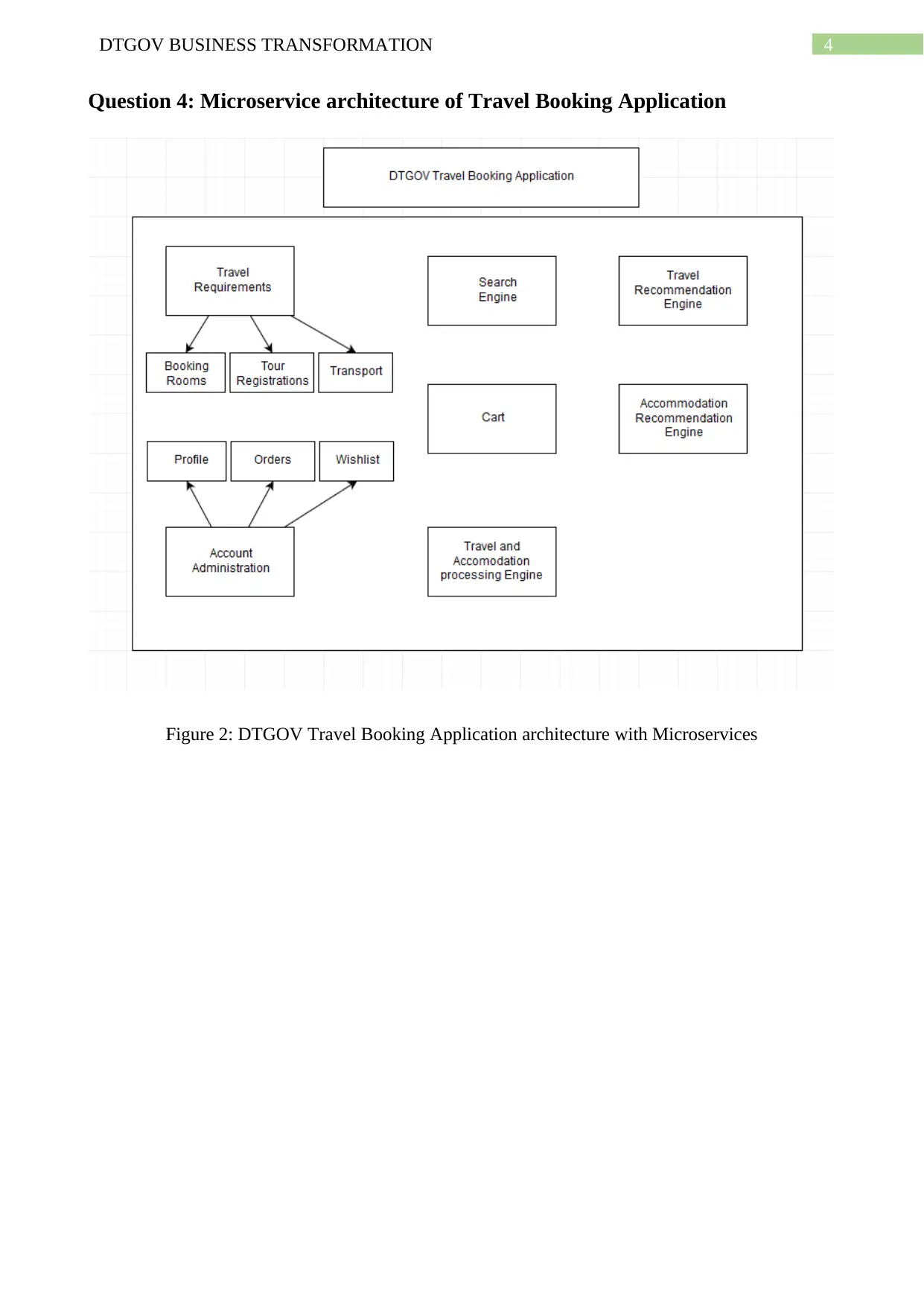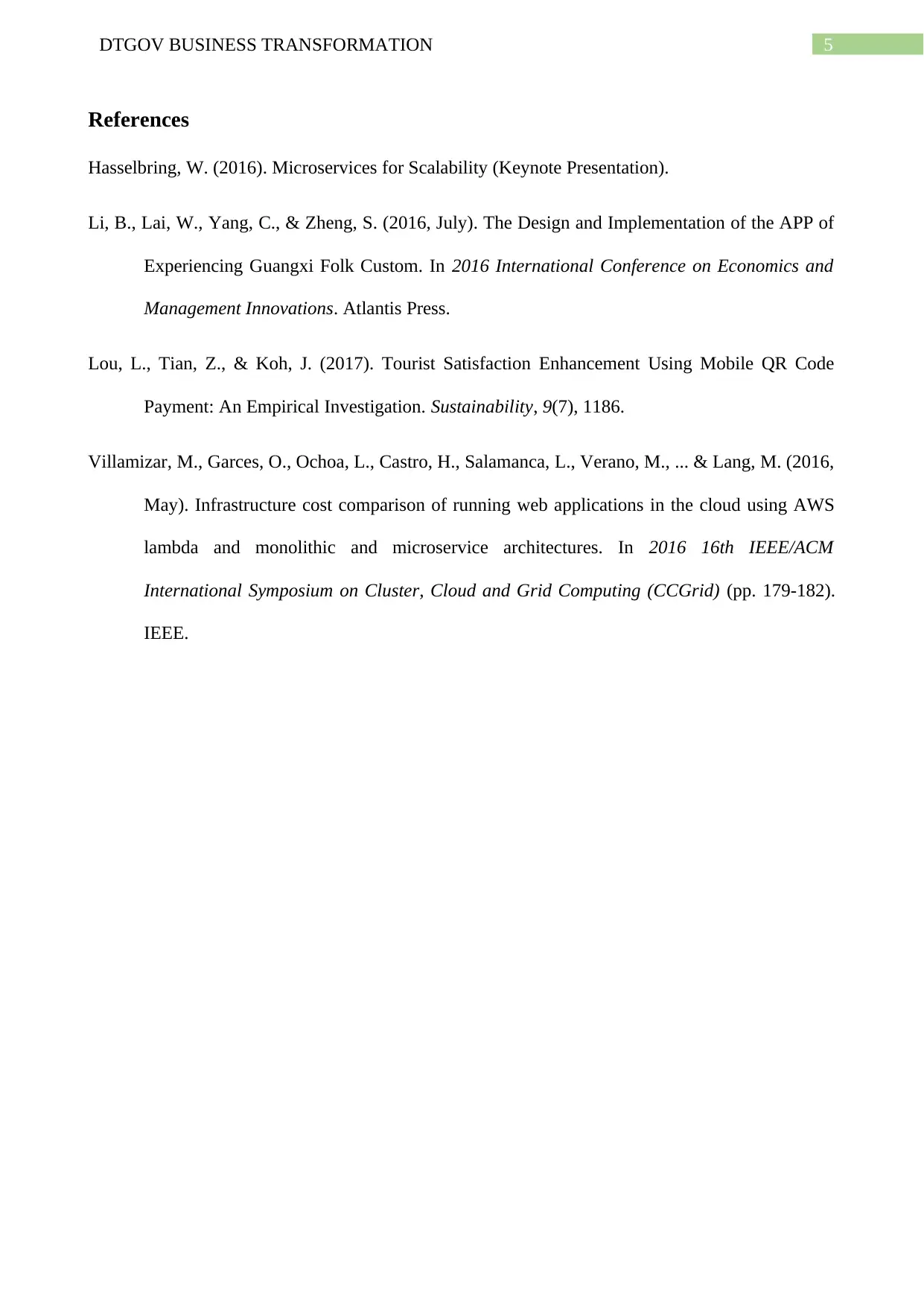University Business Transformation Report: DTGOV Application Analysis
VerifiedAdded on 2023/01/16
|6
|838
|28
Report
AI Summary
This report provides a comprehensive analysis of the DTGOV travel and accommodation application's business transformation. It begins with an assessment of the application's modules, identifying stable modules like the Search Engine, Cart, Travel Requirements, and Account Administration. It also highlights modules requiring frequent modifications, such as the Search Engine and Recommendation Engines. The report then discusses modules experiencing peak workloads. The analysis progresses to propose a phased transformation, suggesting the Travel Requirements and Account Administration modules as the first to be refactored and benefit from microservices. The report emphasizes the advantages of microservices in terms of scalability and independent deployment, especially for features like profiling and search. It illustrates the architecture of the DTGOV travel booking application with microservices, providing a detailed understanding of the application's transformation strategy. The report also includes references to relevant research on microservices and application architecture.
1 out of 6













![[object Object]](/_next/static/media/star-bottom.7253800d.svg)